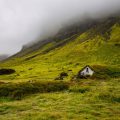Introduction to Self-Guided Camping & Hiking in India
India’s diverse landscapes, from the mighty Himalayas to lush Western Ghats and sun-soaked plateaus, have always attracted nature lovers and adventure seekers. In recent years, a growing number of Indian trekkers and backpackers are choosing to explore these breathtaking trails on their own, without the aid of professional guides. This trend reflects a rising spirit of independence and a hunger for authentic experiences that truly challenge one’s limits.
Self-guided camping and hiking is more than just saving costs; it’s about seizing control over your journey, making spontaneous decisions, and soaking in the raw beauty of India at your own pace. Adventurers are increasingly drawn to this style of travel because it offers unparalleled flexibility—pick your trail, set your own schedule, and pause wherever the scenery demands a second look. For many young Indians and seasoned explorers alike, trekking without a guide is a test of self-reliance and resourcefulness.
The thrill of charting your own path, facing unexpected weather changes, deciphering local signboards, and interacting with village communities along the way brings an unmatched sense of accomplishment. Whether you are navigating through pine forests in Himachal Pradesh or camping by pristine lakes in Uttarakhand, going solo or with friends allows you to discover not only new places but also new strengths within yourself. The rise of this independent travel trend reflects a broader shift in Indian outdoor culture: embracing adventure as a means to grow personally while respecting nature and local traditions.
2. Essential Preparation & Desi Tips for Going Guide-Free
If you are planning to explore India’s stunning camping and hiking trails without a guide, a little desi-style readiness goes a long way. Here’s your roadmap to being truly atmanirbhar (self-reliant) on your adventure.
Route Planning & Permits
Start with detailed research—download offline maps like Google Maps or MapMyIndia and check trekker forums for the latest trail updates. Many popular Indian trails, such as Roopkund or Valley of Flowers, require permits. Always confirm permit requirements with local forest offices or government tourism portals before departure. Here’s a quick comparison:
| Trail Name | Permit Required? | Where to Obtain |
|---|---|---|
| Kedarkantha | Yes | Sankri Forest Office |
| Valley of Flowers | Yes | Govindghat Checkpost |
| Tadiandamol | No | N/A |
Jugaad Hacks for Indian Trails
‘Jugaad’ is all about smart improvisation. Carry reusable bottles and use roadside dhabas (local eateries) for refills—most offer filtered water if you ask politely. For monsoon treks, wrap gear in plastic bags inside your backpack—a simple hack that beats expensive dry sacks! Local shops often sell sturdy tarpaulins that work as makeshift ground sheets or rain covers in a pinch.
Best Gear for Bharatiya Terrains
- Trekking Shoes: Opt for shoes with good grip; many Indian trails get slippery during rains.
- Poncho/Raincoat: A lightweight poncho is more practical than a heavy jacket in the humid Indian hills.
- Powerbank: Rural areas may have frequent power cuts—carry extra batteries or solar chargers.
Packing Checklist Table
| Item | Motive |
|---|---|
| Mosquito Repellent Cream/Oil | Avoid bites in jungles/fields |
| Cotton Bandana/Scarf (Gamcha) | Sweat control & sun protection |
| Local Snacks (Chikki, Parle-G) | Energy boost, easy to find everywhere! |
Cultural Etiquette in Remote Regions
- Avoid shorts and sleeveless tops in conservative villages—blend in with locals by wearing simple, modest clothes.
- If invited for chai or food, accept graciously—it’s seen as respect. But clarify dietary restrictions politely if needed (“Main shakahari hoon”—I’m vegetarian).
- Always greet elders with “Namaste” and ask before photographing people or sacred sites.
Final Tip: Stay Connected, Stay Safe!
Share your route and expected return time with someone back home and note down contact details of the nearest police station or hospital. With these desi hacks and thorough prep, you’ll be ready to conquer any trail across India—apni style mein!

3. Top Camping & Hiking Trails Popular Among Indian Solo Travellers
Triund, Himachal Pradesh – The Adventure Gateway of the North
Triund is a rite of passage for solo adventurers in India, especially those eager to test their grit against the mighty Dhauladhar ranges. Located near McLeod Ganj, this trail is famous for its sweeping Himalayan vistas and the camaraderie of fellow trekkers. No guide needed here—just a daring spirit and a will to embrace chilly winds at the hilltop campsite. At sunset, you’ll find groups huddled around bonfires, sharing stories in Hindi, Punjabi, and English—a true reflection of India’s multicultural trekking community.
Sandhan Valley, Maharashtra – The Grand Canyon of India
Popularly called the “Valley of Shadows,” Sandhan Valley is an adventure playground for thrill-seekers from Mumbai and Pune. This deep canyon, carved through the Sahyadri mountains, offers a blend of hiking, rappelling, and camping—all without mandatory guides. Adventurous Maharashtrians often tackle the trail in small groups or solo, relying on word-of-mouth route advice and classic desi snacks like poha and chai at makeshift campsites.
Kheerganga, Himachal Pradesh – The Mystical Hot Spring Trek
Kheerganga lures independent souls with its legendary hot springs and vibrant hippie culture. Perched high above Parvati Valley, this trek combines challenging ascents with spiritual energy drawn from local legends about Lord Shiva. Indian youth and international backpackers alike camp under starry skies, bonding over maggi noodles cooked on open fires—no guide required, just an adventurous heart and respect for mountain traditions.
Rajmachi Fort, Maharashtra – A Historical Escape Near Mumbai
This iconic trail links Lonavala and Karjat, winding past ancient forts and lush forests. Rajmachi has become a beloved getaway for solo hikers from nearby cities who crave history as much as natural beauty. It’s common to hear Marathi folk songs echoing across the valley as trekkers set up tents beside rustic village homes. The route is well-marked by local signboards and friendly villagers eager to share stories—making it perfect for those who prefer exploring without formal guides.
Kedarkantha, Uttarakhand – The Winter Dream Trek
For solo travellers chasing snow-capped peaks, Kedarkantha delivers both challenge and solitude. Renowned for its accessible summit and panoramic Himalayan views, this trail draws bold Indians who revel in winter camping. Here, trekkers swap tales in Hindi or Garhwali around frozen lakes, proving that self-reliance—and a bit of jugaad—goes a long way on the Indian trail circuit.
These celebrated routes offer more than scenic beauty—they embody India’s evolving outdoor culture where independence is valued and every trek becomes a personal journey into adventure.
4. Reconnecting with Nature: Local Stories from the Trails
There’s a special thrill in exploring India’s camping and hiking trails without a guide, and countless Indian adventurers have stories that capture the spirit of independence and discovery. Each journey is not just about conquering peaks but also about forging connections—with both nature and people.
Memorable Encounters with Local Communities
Many trekkers recount the warmth and hospitality extended by villagers along popular routes like Triund, Sandakphu, and Valley of Flowers. For example, while trekking in Himachal Pradesh, solo hikers often find themselves invited for a cup of chai or a simple home-cooked meal at a pahadi home. The act of sharing stories by a bonfire or learning about traditional farming practices makes every trip more meaningful.
| Region | Local Community Interaction |
|---|---|
| Himachal Pradesh | Invitations for chai, insights into apple farming, folk tales from elders |
| Sikkim | Tasting yak cheese, participating in local festivals |
| Uttarakhand | Lending a hand during harvest, attending village fairs (melas) |
Wildlife Encounters on the Trail
Trekking independently also means coming face-to-face with India’s diverse wildlife. From watching langurs play near Kedarkantha to spotting elusive Himalayan monals in Uttarakhand, each encounter is a lesson in respecting nature. One trekker narrates how sitting silently at dawn allowed him to witness a herd of wild goats (bharal) making their way across rocky cliffs—an experience unmatched by any guided tour.
Lessons Learned from Solo Adventures
The freedom of hiking without a guide brings about moments of self-discovery and humility. Many Indian trekkers emphasize how navigating unpredictable weather or finding their own route taught them resourcefulness. Others speak about developing a deeper appreciation for local culture as they learned to greet villagers with a warm “Namaste” or understood the importance of treading lightly on sacred grounds.
Anecdotes from the Trail
| Trekker Name | Trail | Unique Experience |
|---|---|---|
| Ananya Singh | Kedarkantha | Befriended a shepherd who shared stories about life in the Himalayas over parathas and chutney. |
| Vikram Patel | Sandakphu | Spotted red pandas while quietly resting under rhododendron trees, an experience he calls “pure magic”. |
The tapestry of India’s trails is woven not just with scenic beauty but also with human connections and spontaneous adventures. These local stories remind us that venturing out without a guide can lead to unexpected friendships and unforgettable moments with both people and wildlife.
5. Safety, Responsible Trekking & Legal Considerations
When setting out on India’s popular camping and hiking trails without a guide, safety is your first companion. Remember, the terrain can be as unpredictable as the monsoon! Always inform friends or family about your route, carry a charged mobile with local emergency numbers saved, and pack essential first aid and weather-appropriate gear. It’s wise to check the local forecast—mountain weather in Himachal or Uttarakhand changes faster than you’d expect.
Respect for nature is deeply rooted in Indian culture. Practise ‘Leave No Trace’—Indian style: avoid littering, carry your waste back (don’t burn plastics), and never disturb local flora or fauna. Use eco-friendly alternatives for camping essentials and follow the “take only memories, leave only footprints” mantra. If you’re trekking near sacred sites or villages, dress modestly and seek permission before taking photographs; a simple namaste goes a long way!
Legal aspects should never be ignored. Many forest reserves and high-altitude treks require entry permits or prior registration—even if you aren’t with a guide. Research thoroughly: each state may have different rules. For example, Sikkim often requires special permits for foreigners, and some border areas are strictly off-limits without government approval. Respect local restrictions—crossing into restricted zones could invite trouble from authorities or even the army.
Above all, responsible trekking means valuing both your own safety and the sanctity of India’s pristine landscapes. Follow marked trails to avoid getting lost and refrain from lighting open fires unless permitted—it’s not just about fines, but also protecting fragile ecosystems from accidental forest fires.
In essence: Be alert, stay respectful, travel light but prepared, and always keep an eye on local rules. This way, you’ll ensure your Indian adventure is memorable—for all the right reasons!
6. Must-Try Local Experiences and Street Food Hacks
Unleash the True Flavour of the Trail
One of the greatest joys of hiking and camping across India is the treasure trove of local experiences waiting to be explored. Skip the packaged snacks and let your taste buds dive into regional delights that fuel both your body and soul. Along every trail, you’ll find bustling dhabas—roadside eateries famous for hot chai and fresh parathas. Don’t hesitate to stop for a steaming glass of masala chai; it’s not just a drink, but a moment to connect with fellow trekkers and locals alike.
Street Food Wisdom: Eat Like a Local
Trail life is incomplete without sampling India’s legendary street food. In Himachal, grab piping hot momos or a bowl of thukpa. Down south in the Western Ghats, relish spicy bonda, crispy vada, or a simple banana leaf meal at a roadside stall. Always ask locals for their favourite snack spots—they know where to find the freshest samosas or the fluffiest idlis.
Snack Smart: Regional Favourites on the Go
Certain snacks are perfect for hikers: Maharashtra’s chikki (peanut brittle) gives an energy boost, while Bengal’s jhal muri (spicy puffed rice) is light yet filling. Carry some with you for those mid-hike cravings! And if you’re passing through Uttarakhand, try local cheeses like chhurpi, which last long and pack protein for tough climbs.
Befriend Strangers, Share Stories
The magic of Indian trails lies in its people. Strike up conversations at tea stalls, share stories by the campfire, or join impromptu cricket matches near villages. These connections not only enrich your journey but might also lead to secret trail tips or hidden food gems off the tourist map.
Your Adventure, Your Way
Packing light doesn’t mean missing out; it means opening yourself up to authentic experiences along every step. From chai pit-stops at sunrise to sharing jalebis at dusk, let every bite and conversation shape your adventure into a story worth telling.


